Is Madrid Worth Visiting in 2025? Your Ultimate Travel Guide
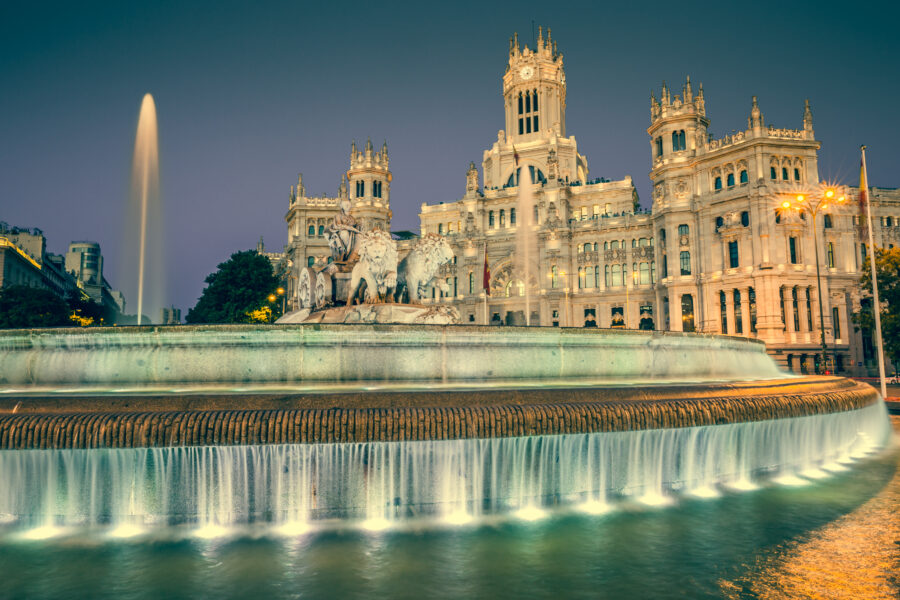
Is Madrid Worth Visiting?
Madrid, the vibrant capital of Spain, offers a rich tapestry of history, culture, and modern attractions. So, is Madrid a good place to visit? Absolutely. The city’s dynamic mix of grand architecture, world-renowned museums, bustling markets, and lively nightlife makes it a top destination for travelers.
Whether you’re a history buff, art lover, foodie, or night owl, Madrid has something to offer everyone. Here’s why Madrid is worth visiting.
Why Is Madrid a Good Place to Visit?
Madrid’s unique blend of historical and contemporary attractions makes it an enticing destination. The city boasts impressive landmarks such as the Royal Palace, the Plaza Mayor, and the Almudena Cathedral.
Art enthusiasts will revel in the treasures of the Prado Museum, the Reina Sofia Museum, and the Thyssen-Bornemisza Museum. Madrid’s culinary scene, vibrant nightlife, and friendly locals also contribute to its charm. The question, “Is Spain worth visiting?” is easily answered with a visit to its bustling capital.

How Many Days in Madrid is Enough?
When planning a trip to Spain’s capital, a common question is, “How many days in Madrid is enough?” You should spend at least three days in Madrid to fully experience the city’s rich history, vibrant culture, and myriad attractions.
This duration allows you to explore the major sights, enjoy the local cuisine, and immerse yourself in the city’s lively atmosphere without feeling rushed. Whether on a tight schedule or having more time to spare, three days in Madrid will provide a comprehensive introduction to its many wonders.
Visiting Madrid in November
Visiting Madrid in November offers a unique experience as the city transitions into winter. The weather is cool and pleasant, with average temperatures ranging from 7°C (45°F) to 15°C (59°F). This mild climate makes it ideal for exploring the city’s outdoor attractions without the summer crowds.
The crisp air and vibrant autumn colors add a special charm to Madrid’s streets and parks, making sightseeing even more enjoyable.
November is also the perfect time to indulge in Madrid’s culinary delights. The city’s cafes and restaurants serve hearty seasonal dishes perfect for the cooler weather. Don’t miss out on trying traditional Spanish stews like cocido madrileño, a rich and warming meal that’s particularly satisfying in the autumn chill.
Furthermore, November in Madrid is rich with cultural events and festivities. The city’s theaters, concert halls, and galleries host numerous performances and exhibitions, offering a great way to immerse yourself in Spanish culture.
With fewer tourists, you’ll have a more authentic and relaxed experience, whether visiting famous landmarks or simply enjoying the vibrant local scene.
Madrid Weather in October
If you’re planning a trip to Spain in the fall, October is another excellent month to visit Madrid. The weather is slightly warmer than in November, with temperatures averaging between 10°C (50°F) and 20°C (68°F), perfect for sightseeing. This comfortable climate allows you to enjoy outdoor activities and explore Madrid’s numerous parks and historical sites.
October is also a great time to experience Madrid’s festivals and events. The city hosts a variety of cultural celebrations during this month, providing visitors with an opportunity to see traditional Spanish music, dance, and arts. The slightly warmer weather is also perfect for enjoying Madrid’s outdoor cafes and terraces, relaxing, and soaking up the atmosphere.
The city’s gardens and parks are most beautiful in October, with vibrant fall foliage creating picturesque settings. A stroll through Retiro Park or the Royal Botanic Garden can be delightful. With pleasant weather and cultural activities, visiting Madrid in October ensures a memorable and enjoyable trip.
Both months offer unique advantages, making either a great choice for a visit to Madrid. Whether you prefer the mild, cozy ambiance of November or the slightly warmer, festive atmosphere of October, you’ll find Madrid a welcoming and fascinating destination.
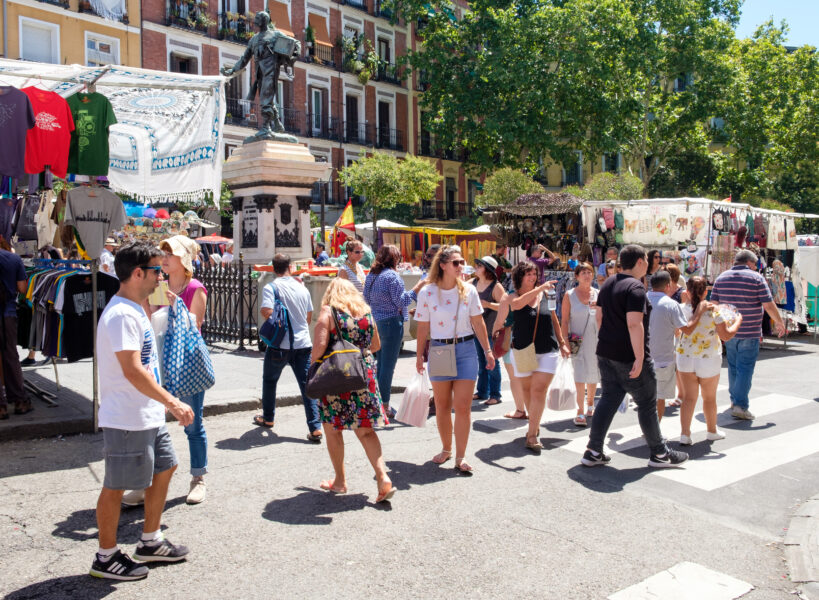
Is Madrid Safe for Tourists?
One of the top concerns for travelers is safety. So, is Madrid safe for tourists? Madrid is considered one of the safest major cities in Europe. Violent crime is rare, but petty theft and pickpocketing can occur in any big city, especially in crowded areas and tourist spots.
Simple precautions, such as eyeing your belongings and avoiding poorly lit areas at night, will help ensure a safe and enjoyable trip.
Madrid Travel Tips:
- Use a money belt to keep valuables secure.
- Avoid displaying expensive items, such as jewelry and electronics.
- Be cautious when using ATMs, and avoid withdrawing large amounts of cash.
- Stick to well-lit and busy areas, especially at night.
Madrid Facts
Madrid is a city steeped in history and culture. Here are some interesting Madrid facts to enhance your trip:
- Population: Madrid is home to over 3.3 million people, making it the largest city in Spain.
- Location: Centrally located on the Iberian Peninsula, Madrid is often called the “Heart of Spain.”
- Language: Spanish is the official language, but many locals, especially in tourist areas, speak English.
- Economy: Madrid is a major financial center in Europe, with a diverse economy that includes finance, technology, and tourism.
- Climate: Madrid enjoys a Mediterranean climate with hot summers and cool winters.
Things to Do in Madrid with Kids
Madrid is a family-friendly city with plenty of activities to keep children entertained. Here are some top things to do in Madrid with kids:
- Retiro Park: This expansive park offers boating on the lake, playgrounds, and puppet shows, making it perfect for a family day.
- Madrid Zoo and Aquarium: Located in Casa de Campo, the zoo is home to over 6,000 animals worldwide.
- Faunia: An interactive nature park where kids can learn about different ecosystems and enjoy close encounters with animals.
- Museo de Cera (Wax Museum): Children will enjoy seeing lifelike wax figures of their favorite celebrities and historical figures.
- Madrid City Tour Hop-On Hop-Off Bus: This convenient bus tour allows families to explore the city’s top attractions at their own pace.
Bus & Tuk Tours of Madrid & Toledo
Discover how Madrid is worth Visiting with these exciting bus and tuk tours. Explore iconic landmarks, historical sites, and vibrant streets in comfort and style. Perfect for a comprehensive and scenic travel experience.
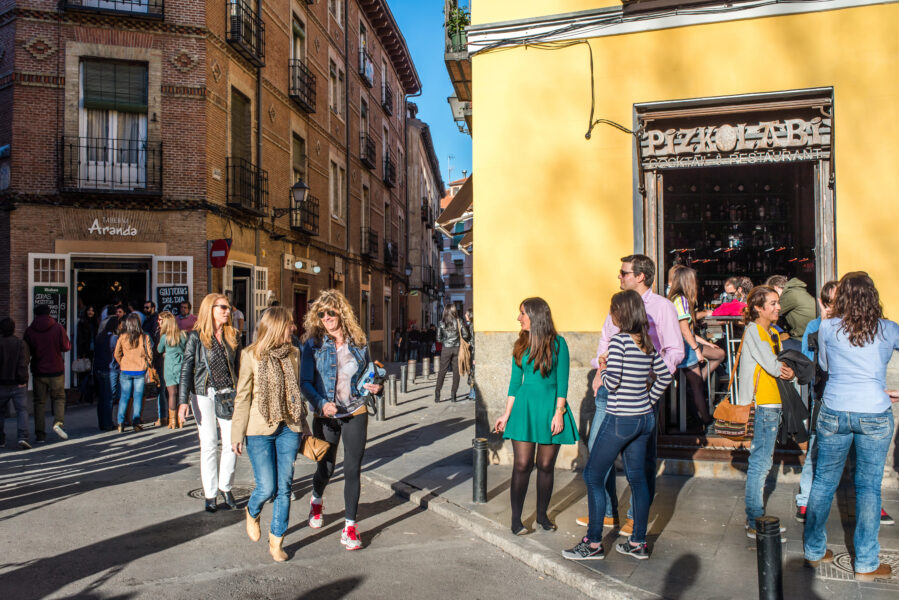
Things to Do in Madrid for Young Adults
Madrid offers a vibrant nightlife and cultural scene, making it an exciting destination for young adults. Here are some top things to do in Madrid for young adults:
- Madrid Clubs: The city is famous for its nightlife, with popular clubs like Kapital, Pacha, and Joy Eslava offering music and dancing until the early hours.
- Tapas Bars: Experience the local culinary scene by hopping between tapas bars in neighborhoods like La Latina and Malasaña.
- Live Music Venues: Enjoy live music at venues like Café La Palma and El Sol, which host performances ranging from indie rock to flamenco.
- Shopping in Gran Vía: This bustling street has shops, theaters, and cafes, perfect for a day of retail therapy and entertainment.
- Art and Culture: Visit contemporary art galleries and attend cultural events and festivals throughout the city.
Crazy Things to Do in Madrid
For those looking to experience the unconventional, here are some crazy things to do in Madrid:
- Café de las Horas: A quirky bar with eclectic decor and a time-travel theme, offering a unique drinking experience.
- Madrid Ghost Tour: Explore the spooky side of Madrid with a guided ghost tour that delves into the city’s haunted history.
- Escape Rooms: Test your problem-solving skills at one of Madrid’s many escape rooms, such as Fox in a Box and Exit Madrid.
- Street Art Tour: Discover Madrid’s vibrant street art scene with a guided tour through the city’s most colorful neighborhoods.
- Micropolix: A miniature city where adults and children can role-play different professions, from firefighters to TV presenters.
How to Plan a Trip to Spain
Planning a trip to Spain involves several key steps to ensure a smooth and enjoyable journey:
- Research and Itinerary: Start by researching destinations and creating a travel itinerary. Include major cities like Madrid, Barcelona, and Seville, and consider day trips to nearby attractions.
- Flights and Accommodation: Use flight comparison websites to find the best deals. Book accommodations in advance, choosing centrally located hotels or vacation rentals for convenience.
- Travel Insurance: Purchase travel insurance to cover any unexpected events or emergencies.
- Transport: Plan how you will get around Spain. Consider purchasing a tourist card for public transport or renting a car for more flexibility.
- Cultural Etiquette: Familiarize yourself with Spanish customs and etiquette to respect local traditions and enhance your travel experience.
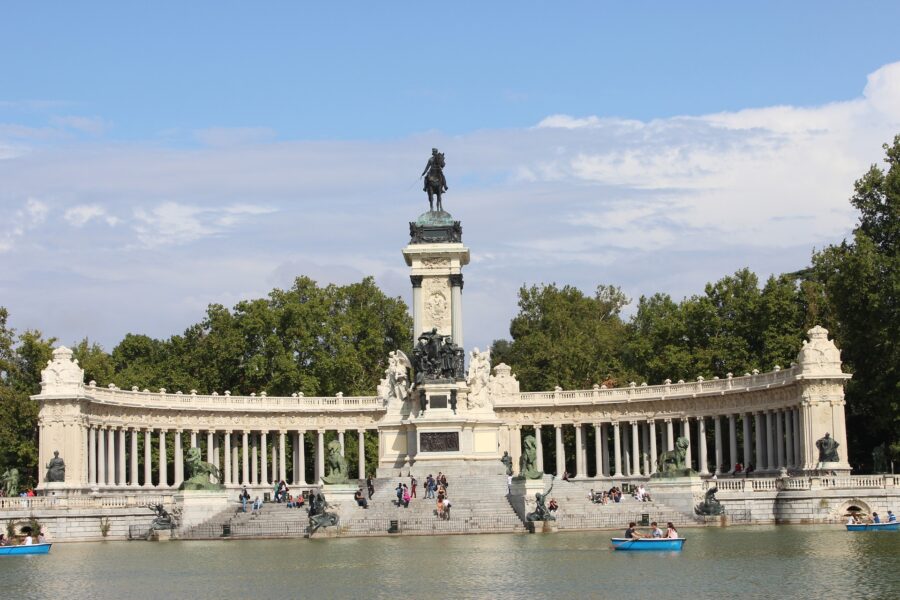
What to Do in Madrid for 3 Days
Madrid, the capital of Spain, is a city brimming with rich history, vibrant culture, and endless attractions. Whether you’re a history enthusiast, art lover, or foodie, Madrid has something to offer everyone. Here’s a detailed guide on what to do in Madrid for 3 days, ensuring you make the most of your visit.
Day 1: Historical and Cultural Landmarks
Morning:
- Prado Museum: Begin your journey at one of the world’s most renowned art museums, the Prado Museum. Here, you can admire Velázquez, Goya, and El Greco masterpieces. The museum is extensive, so plan to spend at least a few hours exploring its vast collections.
- Retiro Park: After immersing yourself in art, stroll through Retiro Park, one of Madrid’s largest and most beautiful green spaces. Don’t miss the Crystal Palace and the serene lake, where you can rent a rowboat.
Afternoon:
- Puerta del Sol: Head to Puerta del Sol, the bustling heart of Madrid. This iconic square is home to several landmarks, including the famous clock that marks the Spanish New Year and the Bear and the Strawberry Tree statue.
- Plaza Mayor: A short walk from Puerta del Sol brings you to Plaza Mayor, a grand square surrounded by impressive architecture. Enjoy a leisurely lunch at one of the many cafes lining the square and soak in the vibrant atmosphere.
Evening:
- Royal Palace of Madrid: Visit the royal palace, the official residence of the Spanish royal family, which is used only for state ceremonies. Explore the opulent rooms, the Royal Armory, and the beautiful gardens. Arriving in the late afternoon can help you avoid the crowds and provide a stunning view of the palace illuminated at dusk.
- Tapas in La Latina: End your day with a tapas crawl in La Latina, one of Madrid’s most vibrant neighborhoods. Sample a variety of Spanish tapas and enjoy the lively atmosphere in this bustling area.
Day 2: Museums and Shopping
Morning:
- Reina Sofia Museum: Start your day with a visit to the Reina Sofia Museum, home to modern and contemporary art, including Picasso’s masterpiece, Guernica. The museum’s extensive collection also features works by Dalí and Miró.
- Atocha Station: Walk to Atocha Station, Madrid’s largest train station, known for its indoor tropical garden. It’s a unique and peaceful spot to take a short break.
Afternoon:
- El Rastro Market (Sunday only): If your visit falls on a Sunday, explore El Rastro, Madrid’s famous flea market in the La Latina district. Browse through antiques, clothes, and various trinkets.
- Gran Vía: Spend your afternoon shopping and sightseeing on Gran Vía, Madrid’s most famous street. Known for its theaters, shops, and architectural landmarks, Gran Vía is often referred to as the Broadway of Madrid.
Evening:
- Chocolatería San Ginés: Treat yourself to churros and chocolate at the famous Chocolatería San Ginés, a must-visit spot for any traveler. This historic cafe has been serving delicious churros since 1894.
- Flamenco Show: Experience the passion and intensity of a traditional Flamenco show. Venues like Corral de la Morería offer dinner and show packages, providing an authentic cultural experience.
Day 3: Unique Local Experiences
Morning:
- Santiago Bernabéu Stadium: Start your day with a tour of the Santiago Bernabéu Stadium, home to Real Madrid. Football fans will love the museum and behind-the-scenes access to the locker rooms and the pitch.
- Temple of Debod: Visit this ancient Egyptian temple, which was gifted to Spain and reassembled in Madrid’s Parque del Oeste. The temple offers panoramic city views and is particularly beautiful at sunrise.
Afternoon:
- Matadero Madrid: Explore Matadero Madrid, a former slaughterhouse turned cultural center. This space now hosts contemporary art exhibitions, workshops, and performances, providing a unique insight into Madrid’s modern cultural scene.
- Casa de Campo: Spend the afternoon at Casa de Campo, Madrid’s largest park. Enjoy boating on the lake, visit the zoo, or take a cable car ride for stunning city views. It’s a great place to relax and unwind.
Evening:
- Malasaña and Chueca: Finish your trip by exploring the trendy neighborhoods of Malasaña and Chueca. These areas are known for their vibrant nightlife, hip bars, and eclectic mix of shops. Enjoy a final night out in one of Madrid’s most exciting districts.
Is Madrid Worth Visiting: Getting Around in Madrid
Madrid offers an abundance of cultural, historical, and modern attractions. With this detailed guide on what to do in Madrid for three days, you’ll experience the best the city offers, from iconic landmarks and world-class museums to unique local experiences and vibrant nightlife.
Whether you’re planning your first visit or returning to explore more, Madrid promises an unforgettable adventure.
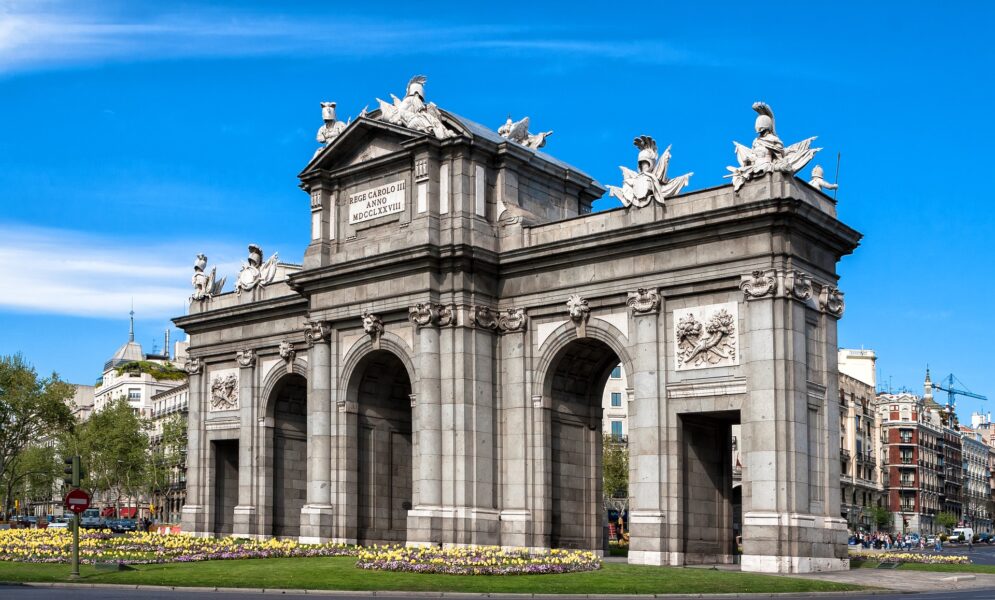
History of Madrid
Origins
Sometime between 860 and 880, the Moorish ruler Muhammad I of Cordoba built a small castle near the Manzanares River. The Moors called the river al-Majrit (water source), and the castle and citadel that appeared around it took on that same name over time.
During the Reconquista, Alfonso VI captured the al-Majrit citadel in 1085. In Spanish writing, the word “al” was dropped from al-Majrit, and over time, the pronunciation and spelling were transformed into Madrid.
During the early years of the Spanish Empire, Madrid remained a small and provincial city of between 4 and 5 thousand people. However, in 1561, Philip II moved his court from the ancient and beautiful city of Seville to the small citadel of Madrid. Because the court was the Spanish Empire’s government, Madrid became Spain’s de facto capital.
The Capital
Within 40 years, Madrid’s population exploded from 5 to 30 thousand. Many of Spain’s top writers and artists flocked to the new capital to practice their art.
Philip II and his son and grandson significantly expanded the original Moorish castle of Madrid, which became the royal palace now known as Palacio Real de Madrid. Sadly, the original palace was destroyed in a fire in 1734, and the current palace, completed in 1764, is its replacement in the same location.
Between 1716 and 1788, Charles III did much to shape the city we see today. He cleaned up the city and the government, earning popular approval from the people who would say, “The best mayor, the King.” Under his rule, many of Madrid’s grand buildings were built, including the Puerto de Alcala and the Prado, which now houses the Prado National Art Museum.
The Fight for Independence
During the Napoleonic Wars, Napoleon tricked Spain and was able to capture all its forts and take over its government while pretending to be an ally. On 2nd May 1808 (Dos de Mayo in Spanish), the people of Madrid revolted against the occupying French garrison and were suppressed with extreme brutality.
This suppression galvanized Spanish people nationwide to form guerrilla forces to resist French occupation, thus beginning the Spanish War of Independence.
The brief battle in Madrid left important physical marks on the capital, including the Plaza del Dos de Mayo and the renaming of the district surrounding this plaza to Malasaña in memory of a teenage girl murdered by French troops in the aftermath of the revolt. There is also a Malasaña Street and a Malasaña Metro Station in Mostoles.
Expansion
Madrid changed much between 1833 and 1868 during the reign of Isabella II. Her government instigated reforms that allowed the city to expand beyond the ancient Moorish walls in a planned Ensanche de Madrid (expansion of Madrid). The state confiscated church property. Church buildings were demolished, leading to the widening of squares and several streets.
During this period, the population of Madrid doubled, and the room was created for the later population explosion from around 300 thousand in 1868 to over 3 million in 1975.

Fact File of Madrid
- Location: At the very center of Spain and the
Iberian Peninsula, southwest Europe. - State: Community of Madrid.
- Population: 6,345,000.
- Area: 233 square miles.
- Climate: Inland Mediterranean climate with hot
summers with frequent heatwaves but cool winters due to its high altitude. - Official language: Spanish.
- Other languages: As a global city, Madrid has
attracted immigrants from all over the world. So, you’ll hear lots of languages
spoken around the center. However, the vast majority (89.8%) are Spanish
citizens and speak Spanish; many immigrants come from old Spanish
colonies where their language is Spanish. - Religion: 66.5% Catholic, 12.8% atheist, 11.1%
agnostic, 9.6% other. - Time zone: Central European Time, which is
UTC+1. - Soccer teams: Madrid has two popular football
teams: Real Madrid and Atletico Madrid. Only Real Madrid has the royal crown on
their flag because they are “real” (royal) by appointment to King Alfonso XIII
in 1920.

Getting to Madrid
Reaching Madrid by air or rail from the UK is straightforward and convenient, making it easy for travelers to experience all the city offers. Is Madrid worth visiting? Absolutely, and here’s how you can get there.
Flying
Madrid-Barajas Adolfo Suárez Airport (MAD) is Spain’s busiest airport and a primary gateway to the country. Numerous international and domestic flights arrive daily, and you can often find competitive fares. The airport connects to the city center via the metro, buses, and taxis, making the transfer seamless.
Tips for Flying
- Direct Flights: Direct flights to Madrid are available from many major cities worldwide. For travelers from the UK, direct flights from London, Manchester, and other major airports are frequent and convenient.
- Connecting Flights: If direct flights are unavailable or too expensive, consider flying into major European hubs like London, Paris, or Frankfurt, then taking a connecting flight or train to Madrid.
- Booking in Advance: Book your flights at least a month to get the best deals. Use flight comparison websites to find the best prices and routes.
Train
Spain’s high-speed train network, operated by Renfe, connects Madrid to various European cities. High-speed AVE trains provide a comfortable and scenic way to travel, with services from cities such as Barcelona, Seville, and Valencia. Internationally, trains from Paris, Lisbon, and other European cities also connect to Madrid, though travel times can be longer.
Tips for Train Travel
- Comfort and Convenience: Trains offer spacious seating, scenic views, and the convenience of arriving in city centers, avoiding the hassle of airport security and long wait times.
- Booking Tickets: Purchase tickets in advance to secure the best prices, especially for high-speed and international routes. Websites like Renfe and Eurail offer schedules and booking options.
Bus
Long-distance buses are another option, with services operating from various European cities to Madrid. Companies like ALSA and Eurolines provide connections from cities in France, Portugal, and other neighboring countries. While bus travel is often cheaper, it tends to be slower and less comfortable than trains and flights.
Tips for Bus Travel
- Budget-Friendly: Buses can be a cost-effective travel method for those on a tight budget.
- Comfort Considerations: For long journeys, consider choosing buses with amenities like Wi-Fi, reclining seats, and restrooms to enhance comfort.
Driving
If you prefer the freedom of driving, renting a car and driving to Madrid from neighboring countries is also an option. Spain has an extensive network of well-maintained highways that are easy to navigate.
Tips for Driving
- Plan Your Route: Use GPS or a reliable map to plan your route and stops.
- Parking in Madrid: Parking in Madrid can be challenging and expensive. Look for hotels with parking facilities or use public parking garages.
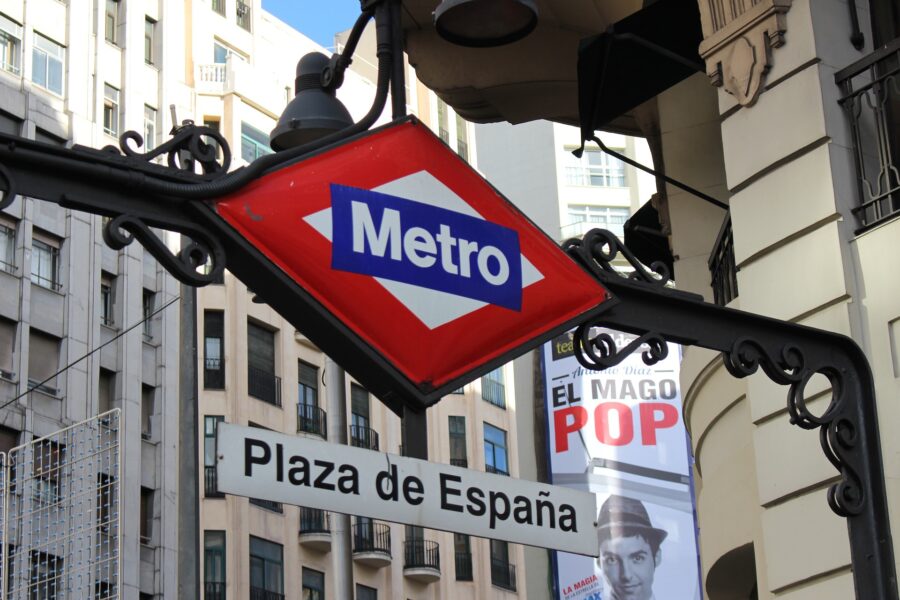
Getting Around in Madrid
Is Madrid worth visiting? Absolutely, and navigating the city is a breeze. While exploring Madrid’s beautiful streets and attractions on foot is ideal, the city’s affordable and efficient public transport system is perfect for moving between neighborhoods quickly and easily.
This ensures you can make the most of your time and fully experience all the vibrant areas that make Madrid an exciting destination.
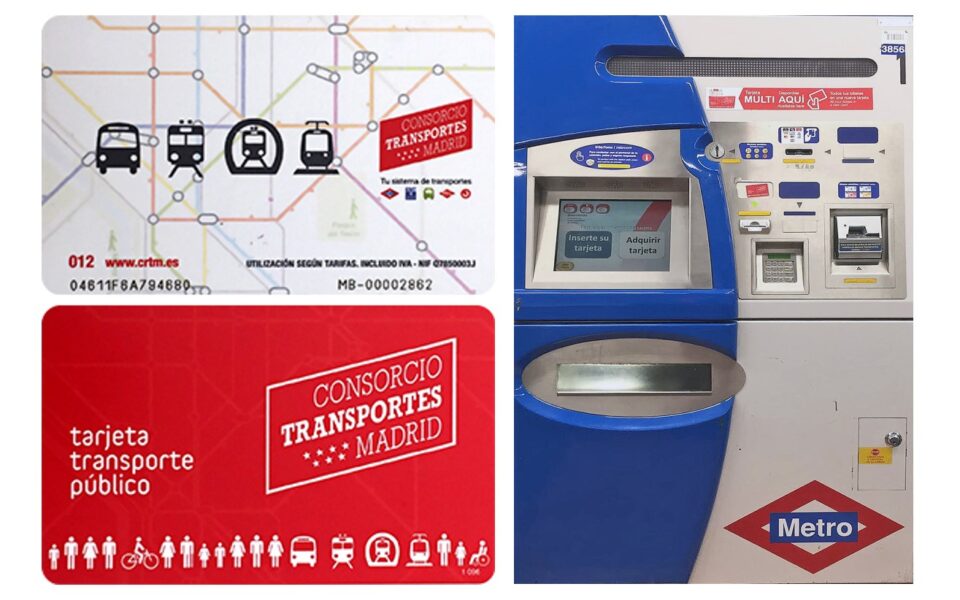
Multi Card
When planning your trip to Madrid, navigating the city’s efficient public transport system will make your stay much more convenient. One of the best options for travelers is the Multi Card, a versatile and cost-effective way to use Madrid’s extensive Metro and public bus networks.
Here’s everything you need to know about where to buy and how to use the Multi Card.
What is the Multi Card?
The Multi Card is a rechargeable contactless card that allows unlimited travel on Madrid’s Metro, EMT buses, and certain regional trains within specified zones. It is an ideal solution for visitors who plan to explore the city using public transport, offering flexibility and convenience.
Where to Buy the Multi Card
The Multi Card can be purchased at various locations throughout Madrid:
- Metro Stations: Most metro stations have ticket machines and customer service centers where you can buy and recharge the Multi Card. Look for machines labeled “Multi Card” or “Tarjeta Multi.”
- Airport: Upon arrival at Madrid-Barajas Adolfo Suárez Airport, you can purchase the Multi Card from ticket machines in the airport’s metro stations.
- Official Transport Information Centers: These centers are located at key points around the city, including major train stations and tourist information offices.
- Online: The Multi Card can also be purchased through the official Madrid public transport website or authorized resellers. You can usually arrange delivery to your hotel or a convenient pick-up location if purchased online.
How to Use the Multi Card
Using the Multi Card is straightforward. Here’s a step-by-step guide:
- Purchase and Load: When you buy the card, you must load it with the appropriate travel pass. There are different types of passes available, including:
- Tourist Travel Pass (Abono Turístico): Offers unlimited travel for 1, 2, 3, 5, or 7 days. This is ideal for visitors who plan to use public transport frequently during their stay.
- Single or Multi-trip Tickets: You can also load individual or multiple journey tickets if you prefer pay-as-you-go travel.
- Validate Your Card: Before boarding a metro, bus, or train, you must validate your Multi Card at the entrance gates. Tap the card on the designated reader at the turnstiles or the bus validator. The system will automatically deduct the fare or recognize your travel pass.
- Check Balance and Validity: You can check your travel pass’s remaining balance or validity period at any ticket machine or by using the Madrid public transport mobile app. This helps ensure you have enough credit or that your pass is valid for your intended journey.
- Reloading the Card: If you run out of credit or your travel pass expires, you can easily reload the card at any metro station ticket machine or online. Please select the desired pass or ticket option and follow the prompts to add it to your card.
Tips for Using the Multi Card
- Keep Your Card Safe: The Multi Card is reusable and can be recharged multiple times, so keep it safe for future visits to Madrid or additional trips during your stay.
- Discounts and Offers: Check for any available discounts or promotional offers for tourists. The Multi Card can sometimes be purchased as part of a tourist package with other benefits like discounts at museums and attractions.
- Zone Coverage: Select the correct zone coverage for your travel needs. Madrid’s transport system is divided into several zones, and the Tourist Travel Pass typically covers all central areas where most tourist attractions are located.
Multi Card – Essential for Exploring Madrid
The Multi Card is essential for anyone exploring Madrid efficiently and affordably. By purchasing and using this card, you can enjoy unlimited travel across the city’s comprehensive public transport network, making it easier to visit all the top attractions and experience everything Madrid offers.
Whether you’re in the city for a short stay or an extended visit, the Multi Card provides the flexibility and convenience you need to make the most of your trip.
Metro
The Metro system is extensive and affordable. It operates from 6 am to 2 am daily. However, it gets crowded and uncomfortable during the morning and evening rush hours.
The cheapest Metro ticket is for 5 stations, and the price increases by €0.10 per station. However, if you’re going to use the Metro several times a day for longer distances than 5 stops, you’re better off buying a Tourist Card.
Bus
The buses are slower than the Metro, but you get to see more of the city during your journey. Plus, there are many more bus stops than Metro stations.
If you’re using a Tourist Card, you can take the Metro over long distances, but use the bus if you’re only going a short distance to a place without a convenient Metro station.
Like many historic European cities, Madrid has a popular hop-on hop-off sightseeing tour bus called the Madrid City Tour. Commentary is available via headphones, and the two Madrid City Tour loops run approximately four times an hour and cover the main attractions.
However, this is not part of the public transport system, so it’s not included in your tourist card. Children under 16 get a reduced rate, and children under 7 go for free!
Taxis
The taxis in Madrid are white with a red diagonal stripe. They can only pick you up from the taxi rank at the railway, bus, and airport stations. Elsewhere, you can hail them. Available taxis display a “LIBRE” sign and a green light.
The basic taxi fee is €2.50, with a kilometer rate of €1.15. For standing and waiting time, the charge is €22.00 per hour. These rates apply except for Monday to Friday from 9:00 PM until 7:00 AM and all day Saturday and Sunday.
During these times, the basic fee increases to €3.15, the kilometer rate rises to €1.40, and standing and waiting time costs €25.30 per hour. Additional surcharges may apply; please refer to the taxi service provider for details.
You can estimate the fare before you travel using an online taxi fare calculator.
Taxis cost a lot more than the Metro. They’re also slower, especially during rush hour. But they will take you from door to door.
Driving
Don’t drive in Madrid. The local drivers are infamous for their aggressive driving techniques. Plus, there’s no point since you can get anywhere quicker on the Metro and don’t have to park.
If you need a car for excursions outside of Madrid, you can hire one from the train stations or the airport, where highways out of the city are easy to reach. You will require an International Drivers Permit to hire a car in Madrid.
Electric bicycle
You can hire electric bicycles from one of the 165 docking stations of the BiciMAD Electric bike-share system. There are over 2,000 bikes in the scheme. It’s a fantastic and healthy way to explore the city’s central areas.
You register at one of the docking stations, and you’ll be issued a one-, three-, or five-day card to use with the bikes. At the end of the period, you’ll be billed for usage. Madrid also has similar schemes for e-scooter hire, like Wind and Lime.
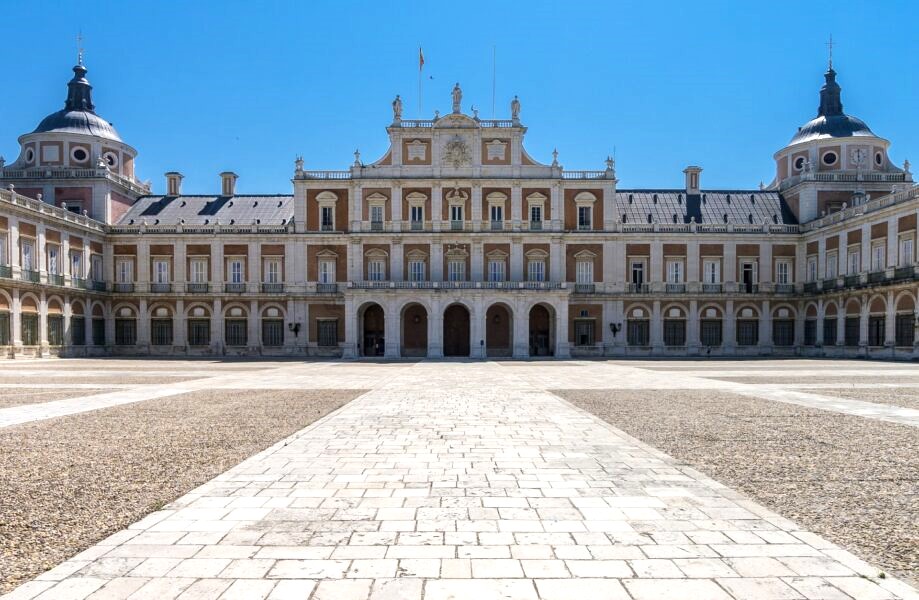
Top 5 Things to Do & See in Madrid
The Palacio Real de Madrid
This fantastic royal palace in the heart of the old city stands on the site of the ancient Moorish fortress that gave the city its name. The Palacio Real de Madrid is the royal family’s official residence in Madrid, though they only use it for certain state functions.
The palace contains 3,418 rooms, including the Royal Apothecary, the Royal Chapel, and the Throne Room.
The Prado National Art Museum
This is Spain’s most important art museum, housed in an amazing 18th-century neo-classical palace with controversial modern extensions, like a cube-shaped building. Inside the Prado National Art Museum, you’ll find famous works of art, including paintings by Bosch, El Greco, Goya, and Velazquez.
The Prado is located on El Paseo del Arte (Boulevard of the Arts), where you can also find the CaixaForum, the Reina Sofia National Art Museum, and the Thyssen-Bornemisza Museum. This street probably contains the highest concentration of priceless works of art in the world.
Plaza Mayor
This square in the heart of Madrid’s historic district was once home to the city’s main market. It’s an impressive public plaza filled with statues and monuments, like the Arco de Cuchilleros entrance and an equestrian statue of Philip III.
The plaza has played an important part in the city’s history. Here, saints were canonized, heretics were burned, and new kings were proclaimed. The many cafés surrounding the square make this a key meeting place for the decision-makers in Spain’s capital city.
Puerta de Alcala
This 1778 gateway into the old city of Madrid resembles the triumphal arches once built by the Romans. Under effective illumination, its engravings, columns, and statues look stunning at night. It’s located on a roundabout in the Plaza de la Independencia.
The Temple of Debod
This is an astonishing monument near the Plaza de España. In 1968, an ancient Egyptian temple was transported stone-by-stone to Madrid as a gift from Egypt. King Adikhalamani dedicated the temple to the gods Amon and Isis in the 2nd century BCE.
Inside, you’ll find well-preserved shrines and a hallway. A peaceful garden has been planted around the temple to create a magical ambiance that is in keeping with its antiquity and original purpose.

Nightlife in Madrid
Madrid has a vibrant nightlife scene. It is both a large capital city and a university city. Whether you’re looking for something quiet, relaxing, distinctly Spanish, or modern and international, you can find it in Madrid.
Relaxing
For a live piano bar, check out the Toni 2 Piano Bar, a prime music venue in Madrid. And if you want to eat during the lively flamenco show, there’s the Corral de la Morería in the city’s Old Town.
Spanish
You may have encountered a few quirky Spanish pop songs over the years. My favorite is The Ketchup Song by Las Ketchup, though a friend loved Loca People by Sak Noel. If you want to get into the Spanish groove and meet locals, various clubs across Madrid, like the La Cartuja, play this kind of music.
And though it’s not Spanish, salsa is popular in Madrid. You can enjoy salsa music and maybe a dance at El Son or Azucar.
Hip-hop and RnB
Check out these popular clubs for an exciting hip-hop and RnB nightlife experience in Madrid.
Shoko Madrid offers a vibrant mix of hip-hop, R&B, and electronic music, with stylish decor and a spacious dance floor. Opium Madrid, renowned for its upscale ambiance and high-energy parties, also features a variety of music genres, including hip-hop and R&B.
Live Rock, Metal, & Indie
There are several great venues in Madrid for live rock, metal, and indie music.
Wurlitzer Ballroom is well-known among rock and metal fans, featuring performances by both local and international bands. Independance Club is famous for its vibrant indie music scene, hosting live performances and DJ sets that attract a diverse crowd.
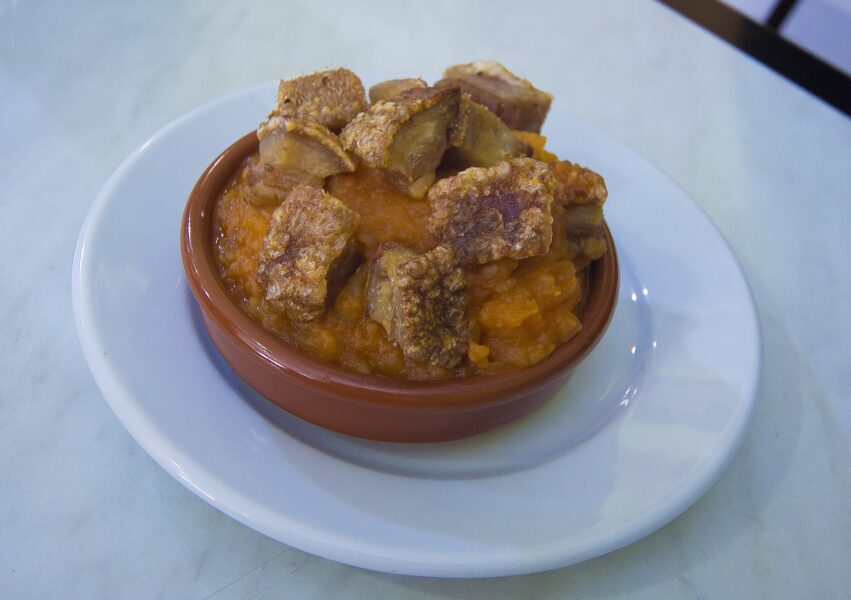
Food in Madrid
Madrid is located in the central region of Spain, where traditionally hearty stews and lots of preserved meat and fish, such as jamon Iberico dry-cured ham, are on the menu. But because it is the capital, you can find a wider range of dishes from all across the country in Madrid’s 8,000+ restaurants.
Restaurants
Tapas restaurants, cafés, and bars are common everywhere. The definition of tapas varies between food outlets. Tapas are small portions that may be appetizers served alongside alcohol or samplers, allowing you to taste a wide variety of traditional dishes in one sitting.
Certainly, it would help if you sampled as much Spanish cuisine as possible while visiting Madrid.
One place you might like to sample traditional local food is El Sobrino de Botín, established in 1725 and claims to be the oldest restaurant in the world. Their most popular dish is roast suckling pig, which Spanish tourists all want to taste. Earnest Hemmingway used to eat there all the time before the Civil War.
Other Traditional Dishes
Cocido Madrileño
If you decide on a set menu in a Madrid restaurant, a traditional stew you’ll likely serve is cocido Madrileño (Madrid stew). This features chickpeas in a rich broth created from many different ingredients, including potatoes, chorizo sausages, blood sausages, chicken, beef, and pork.
Strangely, the traditional way to eat cocido Madrileño is by separating the parts. First, the actual stock of the cocido is poured from the pot into a dish and eaten with noodles.
Second, the chickpeas and vegetables are taken from the pot and served. Last, the remaining meat is eaten by itself. La Bola Taberna is renowned for cocido Madrileño presented traditionally.
Callos Casserole
Callos Casserole is a traditional Spanish dish with roots in Madrid. It features a rich, hearty stew made with tripe, chorizo, and chickpeas. This flavorful casserole is a beloved comfort food in Spain, particularly during the colder months.
Fried Pig’s Ears
Fried pig’s ears are a popular dish in Madrid. Although strange, oreja a la plancha can be as flavorsome as bacon if correctly cooked.
However, many dishes feature preserved fish or meat. Casa Toni on Calle de la Cruz Street is a great place to try oreja a la plancha and other traditional dishes.
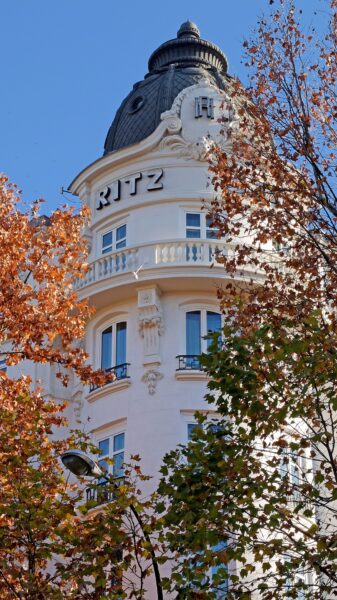
Accommodation in Madrid
Madrid comprises 21 districts, each with its distinct character. However, with the city’s efficient public transport system, you can stay anywhere and enjoy its many attractions.
The Center
The central area of Madrid is great for people who want to be within easy reach of all the major attractions. Traditionally, the Puerta del Sol square marks Spain’s center. Luxury hotels line the main avenues of the center, but the side streets are awash with hostels and guest apartments.
You can find great budget options, such as Hostal Abami, and Madrid Suites San Mateo. But you can also find some wonderful, family-friendly hotels, such as the Pestana Plaza Mayor Madrid, NH Collection Madrid Gran Via, and Eurostars Madrid Gran Via.
La Latina
If you’re interested in history, this is the oldest neighborhood, where you’ll find ancient churches and sunny plazas. Many historic buildings have been refurbished to create holiday lettings or boutique hotels. The Posada del Dragon Hotel is a great example, and it sits over a popular tapa bar.
Malasaña
Just north of the center is Malasaña, where you’ll find some of the best nightlife in the city. The area provides many accommodations, from hostels to boutique hotels. The Hostel CC Malasaña is a superb budget option.
Chueca
This is another great area for nightlife and where you’ll find the best LBGT bars and clubs. This area also has many exclusive restaurants and designer clothes shops. You’ll find the Only You Boutique Hotel on Calle Barquillo.

Visiting Madrid Safely
Spain is considered to be a relatively safe country. However, Madrid suffered from terrorist bombings in 2000, 2004, and 2006. 193 people died, and 2,050 were injured in the 2000 bombing on trains around the city carried out by Al-Qaeda.
The other bombings were by ETA, the Basque separatist organization. All were carried out in public transport-related locations. So, stay aware.
If you see any unattended packages or bags in the city, especially on public transport, distance yourself from the item, alert public transport officials, or call the police on 112. When traveling, don’t plug in earphones and reduce your situational awareness.
Petty Theft
Watch out for pickpockets and bag snatchers in tourist hotspots and on public transport. Avoid deserted streets and parks at night. Go places in groups rather than on your own.
When going out, keep your money in the front pocket of your jeans or a money belt. When using an ATM or paying with a card, cover your hand to avoid giving away your PIN code.
Personal Safety
If you enjoy Madrid’s nightlife, tell a relative or friend about where you’re going and ensure you check in with them on return to your hotel. Be careful of your drink and be wary of people who offer to buy you drinks. When using the restroom, take your bag and don’t leave an unattended drink.
Madrid’s drivers have a reputation for aggressive driving, so be especially careful crossing the road. Where possible, use a marked pedestrian crossing.
Before going to Madrid, check with your government’s foreign affairs department, which is the Bureau of Consular Affairs in the US.
Your government can advise you if there are any specific reasons not to travel or things to avoid in Madrid, such as a planned public demonstration against American foreign policy.
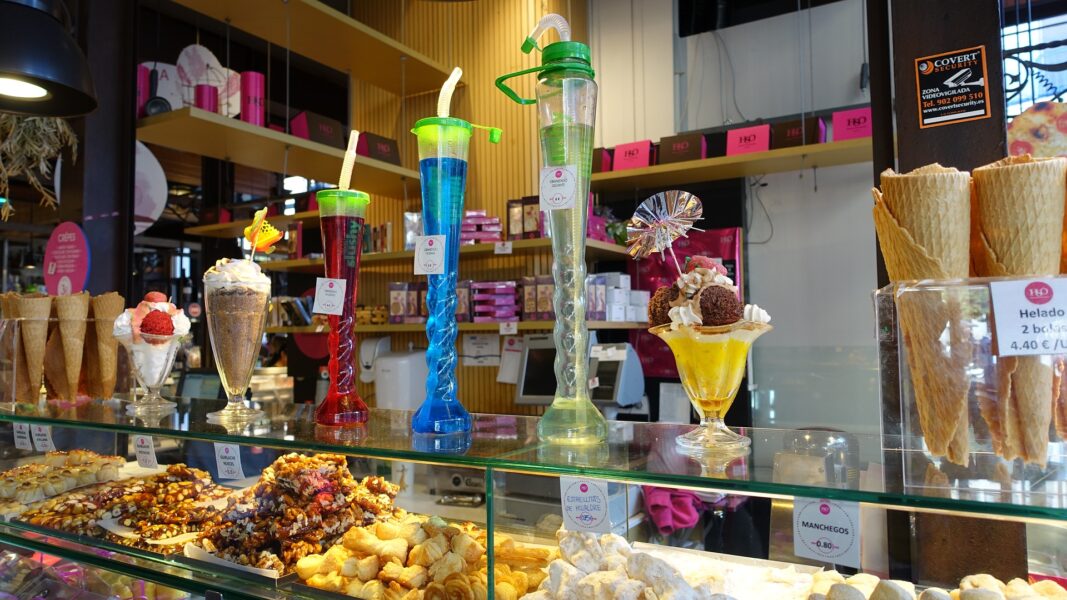
Is Madrid Worth Visiting – Yes!!!
For me, the amazing food is what makes Madrid so special. Compare Madrid with New York. Madrid has 8,000+ restaurants, while NYC is much larger, with only 10,000. Food is a much more important concern in Madrid.
I love the Spanish approach to food, especially in Madrid, where the best traditional dishes take a long time to prepare, and you’re expected to take a long time to savor them. Yes, I like to eat!
Robert’s passion for nature and history began early when he preferred museums over beaches. An archaeology and anthropology graduate from Cambridge, he volunteered across the UK and explored China. Now, he writes about his adventures while his kids drag him to beaches and theme parks.


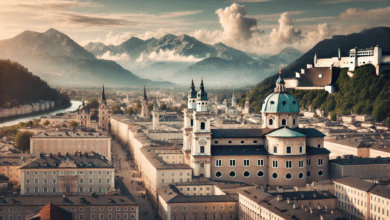
![How to Use Apple AirTags as Luggage Tracking Tags - [year] Update](https://theflightguy.com/wp-content/uploads/2024/06/image-140-390x220.png)

